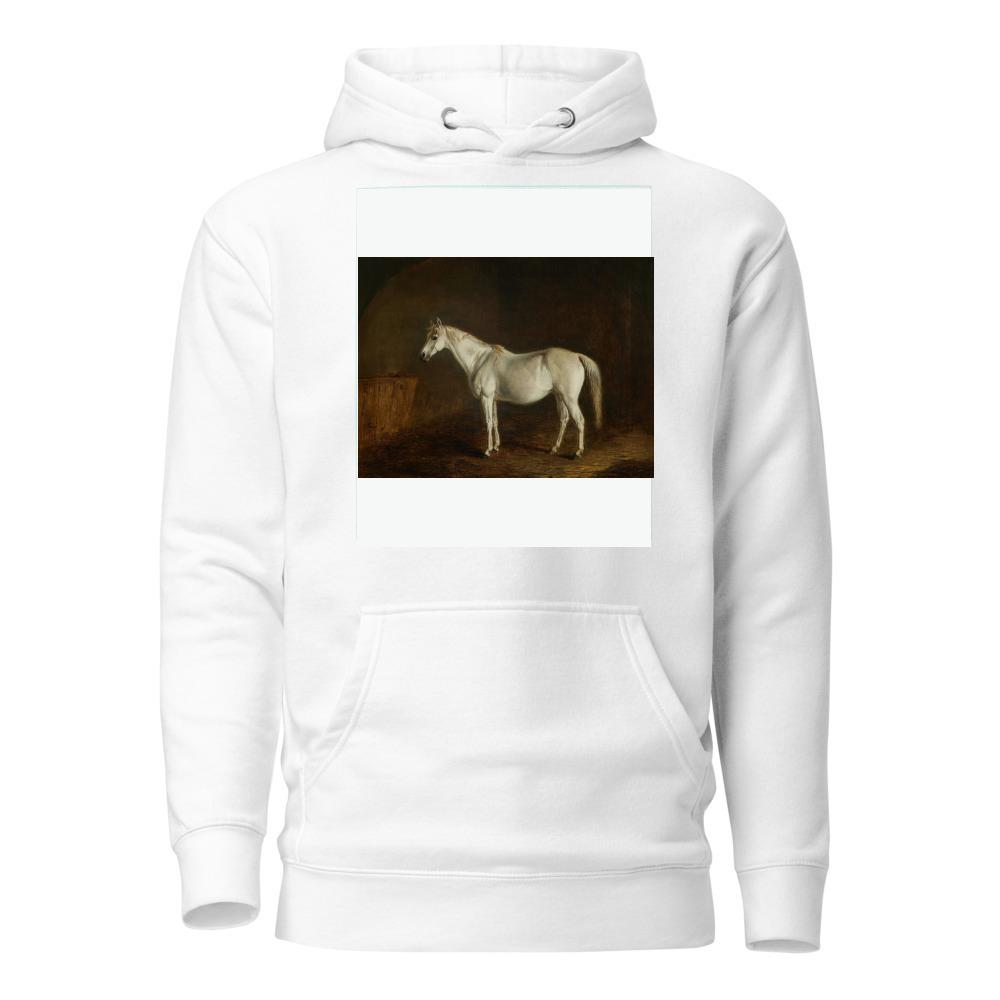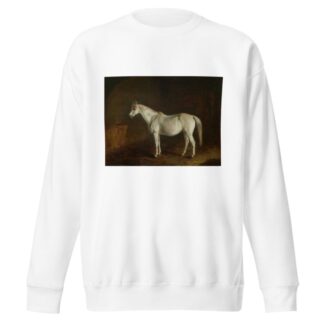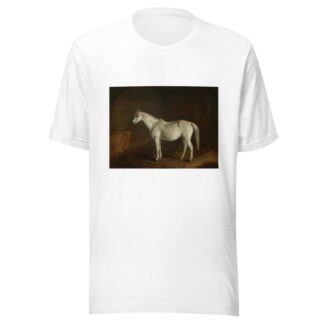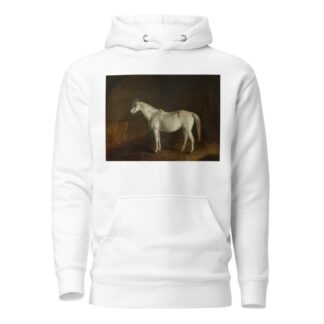Description
Reel with Gray Racehorse by Edward Troye printed on a Hoodie
About the Hoodie
Modern fit
It provides a more tailored look than a regular fit
Comfortable
The fabric and fit of this item are extra comfy
Tear-away tag
Easily removable tear-away tag that allows you to add a custom inside label
Premium quality
The product is made from premium, high-quality materials
Classic unisex hoodie with a front pouch pocket and matching flat drawstrings. The 100% cotton exterior makes this hoodie soft to the touch.
- 65% ring-spun cotton, 35% polyester
- Charcoal Heather is 60% ring-spun cotton, 40% polyester
- Carbon Grey is 55% ring-spun cotton, 45% polyester
- 100% cotton face
- Fabric weight: 8.5 oz./yd.² (288.2 g/m²)
- Front pouch pocket
- Self-fabric patch on the back
- Matching flat drawstrings
- 3-panel hood
- Tear-away tag
Edward Troye (1808 – 1874)
Edward Troye, was an Swiss-born American painter of Thoroughbred horses.
Troye was born on July 12, 1808 in Lausanne, Switzerland.
At age 20 he emigrated to the West Indies, and later on to Philadelphia, Pennsylvania where he was an employed artist of Sartain’s Magazine.
On July 16, 1839, Troye married Corneila Van de Graff of Scott County, Kentucky, and settled in Central Kentucky where he lived for the next 35 years.
While living in Kentucky, Troye painted portraits and race horses for the local families in Georgetown, Kentucky. He worked primarily for the Steele and Alexander families, and Alexander “Keene” Richards.
Troye taught French and drawing at Spring Hill College, 1849-1855.
Later he and Richards traveled to the Holy Land where he painted horses, Damascus, Syria cattle, the Dead Sea and the bazaar of Damascus while Richards bought Arabian horses. Bethany College, West Virginia retains copies of some of these paintings.
In 1869, Troye moved his family to a 700-acre (2.8 km2) cotton plantation in Madison County, Alabama. Troye returned to Kentucky and resided at the home of longtime friend Keen Richards until his death from pneumonia on July 25, 1874.
Troye’s best works, between the years 1835 and 1874 (prior to the birth of photography), are true-to-life delineations of historical American Great Plains horses. He painted Southern United States pre-American Civil War thoroughbreds. Little was known of Troye’s work in the eastern United States until 1912. Since then, more than 300 of his paintings have been found, of which three-fourth’s have been photographed since 1912. In addition, he is the author of The Race Horses of America (1867).
Troye is buried in Georgetown Cemetery with his wife and grandson, Clarence D. Johnson.






Reviews
There are no reviews yet.